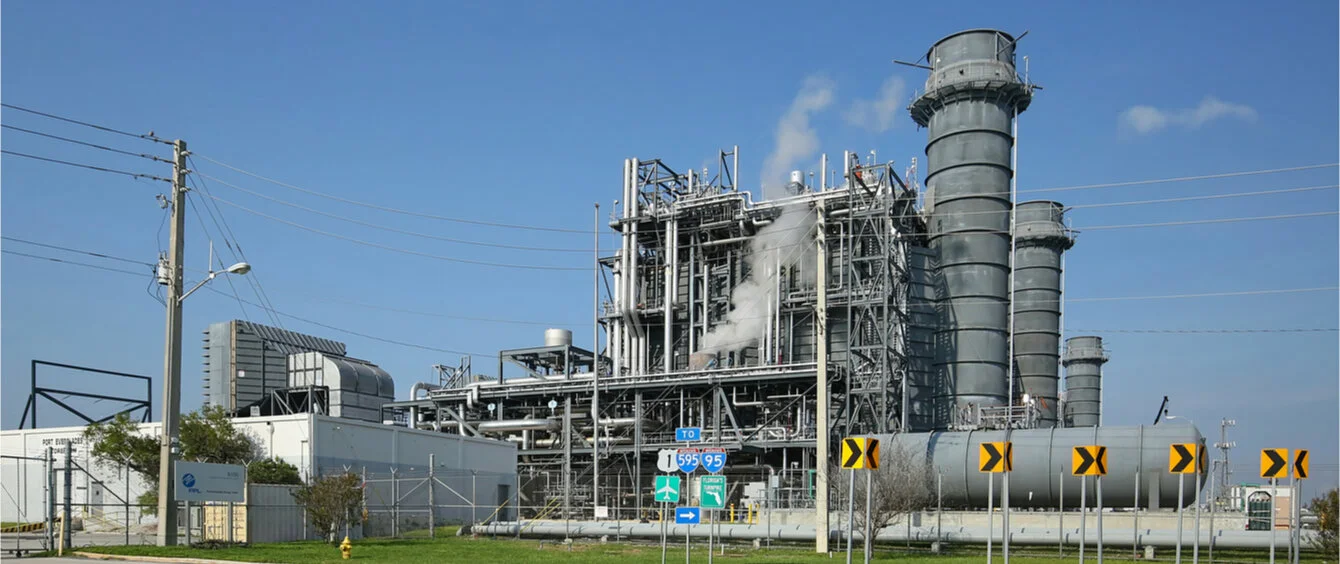Natural gas has a much smaller impact on carbon footprints than mineral oil and coal. For years, this commodity has been displacing other fossil fuels above all as a source of energy. This has resulted in many countries improving their carbon footprint significantly.
According to the International Energy Agency (IEA), a total of 6,100 terawatt hours (TWh) of electricity was generated from natural gas worldwide in 2018. This was some four percent lower year on year, with coal-fired power production advancing one percent less. Preliminary figures have electricity generation from natural gas posting further growth in 2019.
No global trend
However, this is not a global development, as the lion’s share of the increase – nearly 75 percent in 2018 – came from the USA. The world’s largest economy expanded its natural gas-fired power production by 17 percent, accounting for nearly a quarter (1,468 TWh) of global generation from this energy source.
Based on figures published by the U.S. Energy Information Administration (EIA), coal-fired electricity generation in 2019 rose for the fifth consecutive year – by nearly 40 percent compared to 2014. Last year, 38.4 percent of production was fuelled by gas, with 23.5 percent coming from coal. This represents an about turn by these two energy sources relative to 2014. So far, a substantial portion of CO2 emission savings by the USA has been attributable to this fuel switch. Now, however, renewables are catching up and could surpass coal as a fuel for generating electricity by as early as 2021.
Electricity generation in the US
Source: IEAMajor differences the world over
In 2018, China boosted its natural gas-fired power production by a whopping 30 percent. But this is a far cry from being a fuel switch. Whereas coal dominates the Chinese energy mix, with a share of two thirds, natural gas continues to account for just a few percentage points.
By contrast, Germany is making real headway. Natural gas recorded an all-time high in electricity generation of 91 TWh in 2019, good for a respectable 15 percent of the country’s total power production. At 28 percent, coal’s share was the lowest in decades.
Electricity generation in Germany
Source: bdewIn Italy, natural gas has long been responsible for roughly half of the country’s electricity generation. Since the reactor incident at Fukushima, China has produced most of its power using fossil fuels, which in 2018 accounted for about three quarters, about half of which was attributable to natural gas. Conversely, India does almost completely without natural gas. France and Canada traditionally produce low-carbon electricity from nuclear and hydroelectric power stations. Natural gas plays virtually no role whatsoever.
Great Britain shows how it’s done
The United Kingdom may well have made the most resolute fuel switch of all. By establishing a minimum CO2 price in 2013 and deciding to phase out coal-fired electricity generation by as early as 2025, Great Britain has spurred the construction of new combined cycle gas turbine (CCGT) power plants. Today, the nation produces electricity from natural gas in simple gas turbines only in exceptional cases.
Natural gas has come to close most of the supply gaps in Great Britain left by nuclear and renewables including hydropower. From 2012 to 2019, the share of electricity accounted for by coal dropped from 38 to approximately two percent. Natural gas increased its share from 28 to 41 percent during the same period.
Electricity generation in the UK
Source: IEAA variety of causes
The reasons for the natural gas boom are myriad. For starters, production volume has risen steadily for twenty years, with 2009 being the sole exception. The USA was the major driving force in the past decade, on the strength of its fracking boom. Buoyed by Russia, Australia and the Middle East, this put so much natural gas on the market that the world market price dropped and demand rose.
Moreover, modern CCGT power stations have an electric efficiency of more than 60 percent, which is unattainable by their coal-fired brethren. Combined with low gas prices, this gives them the lowest generation costs of all conventional energy fuels. Only wind farms and PV arrays are capable of generating cheaper electricity, as long as conditions are favourable.
By contrast, it took quite some time for the fuel switch to make inroads in Germany, with many gas-fired power plants being online for short periods. However, operators modernised a large number of stations in order to make them competitive outside of the base load and demand spikes. Rising emission and falling gas prices allowed them to experience a record year in 2019. Think tank Agora Energiewende opines that this puts Germany’s climate protection goals for 2020 “within reach.”
The path to the future
In the quest to ensure a sustainable energy supply while pursuing the emission targets, this can obviously not be anything but a temporary solution. After all, natural gas firing also produces carbon dioxide.
Nevertheless, power producers can build a lower-carbon bridge to a zero-emission future by expanding and upgrading their gas-fired power plants. Based on current knowledge, it will be virtually impossible to ensure security of supply entirely without chemical storage media such as methane and hydrogen.
This may be the more economically feasible alternative compared to the required expansion of the power grid and electricity storage capacity – at least in regions with strong gas infrastructure such as Europe, the USA and Japan. Emissions targets could be hit if biogas made of crops, green hydrogen or sustainably produced synthesis gas were used to power highly efficient gas power stations.
Photo credit: Jilian Cain Photography, shutterstock.com
